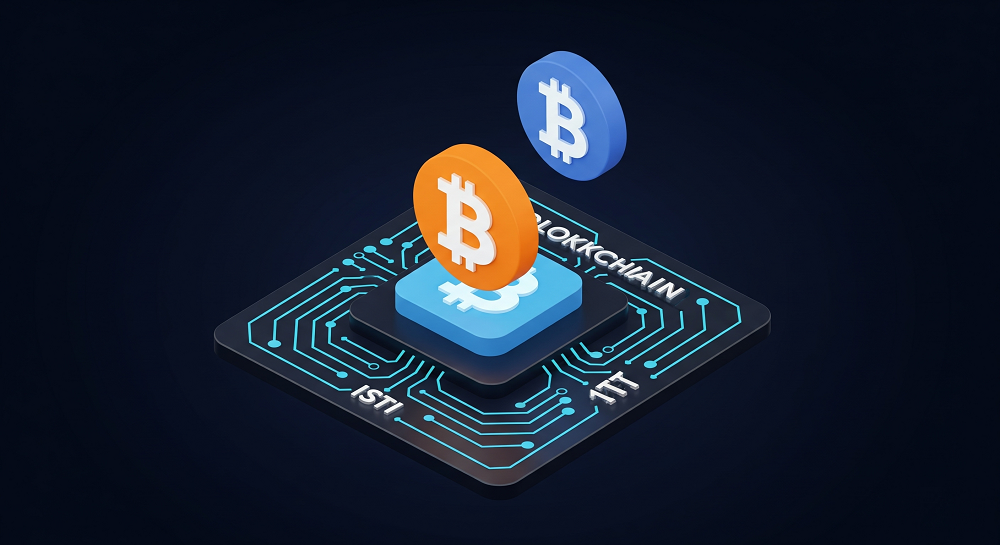Decentralized applications, or dApps, are rapidly transforming how businesses and users interact in the digital world. Built on blockchain technology, these apps offer transparency, security, and decentralization, opening doors to new possibilities in finance, gaming, supply chain, identity verification, and beyond. However, one of the biggest challenges facing the ecosystem today is interoperability—the ability of dApps and blockchains to communicate, share data, and work seamlessly across multiple networks.
This challenge is critical because the blockchain space is highly fragmented. Hundreds of different blockchains exist, each with unique protocols, consensus mechanisms, and use cases. For dApps to reach their full potential, they must be able to operate across these varied chains, unlocking value and increasing utility for users and developers alike.
In this post, we’ll dive into the interoperability frontier, explore why it matters, the technical hurdles involved, and how the landscape is evolving. We’ll also discuss the role of blockchain development services and how working with the best blockchain development company can help businesses navigate these complexities and build truly cross-chain dApps.
Understanding Blockchain Interoperability
Interoperability in the blockchain context refers to the ability of different blockchain systems to exchange information and value without friction. It means a dApp running on one blockchain can interact with smart contracts, tokens, or data on another blockchain.
Currently, blockchains often operate as isolated ecosystems. For example, a dApp on Ethereum typically cannot directly interact with a blockchain like Binance Smart Chain or Polkadot. This isolation creates silos of data and assets, limiting user experience and stalling the growth of the decentralized web.
Interoperability aims to remove these barriers, enabling:
- Cross-chain asset transfers (e.g., sending tokens from Ethereum to another chain)
- Communication between smart contracts on different blockchains
- Shared data and identity management across chains
- Integrated user experiences leveraging multiple blockchains simultaneously
Why Blockchain Interoperability Matters
There are several reasons why interoperability is a key frontier for dApps and the broader blockchain ecosystem:
1. Unlocking Liquidity and Assets
One immediate benefit is the ability to move tokens and assets freely across chains. Liquidity fragmentation is a major issue—assets locked on one blockchain can’t easily participate in financial activities on another. Cross-chain transfers enable better asset utilization, improving DeFi protocols, trading, and payments.
2. Enabling Multi-Chain Applications
As different blockchains specialize in various functionalities (scalability, privacy, low fees), interoperability lets developers harness the best features of each. A dApp could use a fast, low-cost chain for everyday transactions while leveraging Ethereum’s security and ecosystem for complex operations.
3. Enhancing User Experience
End users no longer need to manage multiple wallets or switch between networks to access different services. Interoperable dApps can aggregate resources and provide seamless interaction, increasing adoption.
4. Supporting Scalability and Innovation
Interoperability promotes innovation by allowing developers to build modular systems that can scale horizontally across chains rather than being limited to a single chain’s constraints.
Key Technical Challenges to Cross-Chain Interoperability
Building interoperable dApps is far from simple. It involves several technical hurdles:
1. Differences in Protocols and Architectures
Blockchains differ widely—some use Proof of Work, others Proof of Stake; some have smart contract support, others don’t. This diversity means interoperability solutions must handle diverse consensus rules, transaction formats, and state models.
2. Security Concerns
Interoperability protocols must be secure to prevent hacks and fraud. Transferring value or data across chains exposes risks such as double spending, replay attacks, and malicious actors exploiting bridges or relays.
3. Latency and Throughput
Cross-chain communication often requires waiting for finality on both chains, which can introduce latency. Managing throughput and ensuring timely updates between chains is critical for a smooth user experience.
4. Standards and Compatibility
A lack of unified standards means interoperability solutions can be fragmented or incompatible themselves. Developing widely accepted protocols and interfaces is necessary for broad adoption.
Approaches to Achieving Interoperability
Several technical strategies and tools have emerged to address these challenges, each with pros and cons:
1. Cross-Chain Bridges
Bridges connect two separate blockchains, allowing assets and data to move between them. They work by locking tokens on one chain and minting equivalent tokens on the other.
- Advantages: Bridges enable direct asset transfers and are relatively easy to implement.
- Drawbacks: They introduce centralization risks if the bridge is controlled by a single entity. Bridges have been targeted in multiple hacks, highlighting the security challenges.
2. Sidechains and Layer-2 Solutions
Sidechains are independent blockchains running parallel to a main chain, with periodic checkpoints or proofs submitted to the main chain. Layer-2 scaling solutions also use off-chain processing to improve throughput.
- Advantages: They help scale applications and allow interoperability within an ecosystem.
- Drawbacks: Cross-chain communication beyond the ecosystem still requires additional bridges or relays.
3. Relay Chains and Hub Models
Some blockchains serve as “hubs” connecting multiple chains (parachains). Relay chains manage consensus and message passing between connected chains.
- Advantages: Provide secure and scalable interoperability within their ecosystem.
- Drawbacks: Limited to specific blockchain networks, often requiring chains to conform to certain protocols.
4. Atomic Swaps and Decentralized Exchanges (DEXs)
Atomic swaps enable peer-to-peer token exchanges across chains without intermediaries. These are often used in decentralized exchanges.
- Advantages: Trustless and secure token swaps.
- Drawbacks: Limited to exchange of tokens, not broader smart contract interactions.
The Role of Blockchain Development Services
Creating interoperable dApps requires expertise in multiple blockchain platforms, protocols, and security standards. This is where blockchain development services play a crucial role.
A professional blockchain development team or the best blockchain development company brings together:
- Deep understanding of smart contract development across different chains (Ethereum, Binance Smart Chain, Polkadot, etc.)
- Knowledge of interoperability protocols, bridges, and cross-chain messaging
- Experience designing secure, scalable, and efficient dApp architectures
- Ability to integrate wallets, APIs, and user interfaces for seamless multi-chain interactions
Hiring expert developers and consultants ensures businesses avoid common pitfalls, protect against vulnerabilities, and accelerate time-to-market for cross-chain solutions.
Examples of Interoperability in Action
While the space is still evolving, some practical examples illustrate how interoperability benefits users and developers:
- A DeFi platform allowing users to deposit assets from multiple chains and manage liquidity pools in a unified interface.
- NFT marketplaces where digital collectibles from different blockchains can be viewed, bought, or sold in one place.
- Supply chain solutions sharing data securely across private and public blockchains to improve traceability.
- Gaming dApps that allow players to transfer assets like skins or tokens between games on different chains.
These use cases show the potential for dApps that are not limited by single-chain boundaries, creating richer and more connected ecosystems.
Looking Ahead: The Future of Cross-Chain dApps
Interoperability is still an active area of research and development. The blockchain industry is moving towards standards and protocols that promote seamless cross-chain interaction without compromising security or decentralization.
Efforts to improve scalability, finality times, and standardization will further enable the creation of dApps that integrate multiple blockchains effortlessly. As these advances progress, more businesses will seek blockchain development services specializing in multi-chain solutions to remain competitive.
Working with the best blockchain development company will be essential for companies wanting to lead in the Web3 era, unlocking new value through interoperable dApps that are flexible, secure, and user-friendly.
Conclusion
The interoperability frontier is one of the most important challenges and opportunities for blockchain development today. As dApps continue to grow in number and complexity, their ability to operate across multiple blockchains will define their usefulness and adoption.
Solving interoperability issues will break down current ecosystem silos, unlock liquidity, improve user experiences, and foster innovation. For businesses and developers, partnering with experienced blockchain development services is vital to navigating these challenges and building the next generation of decentralized applications.
By focusing on interoperability, the blockchain community moves closer to a truly decentralized and interconnected digital future.


